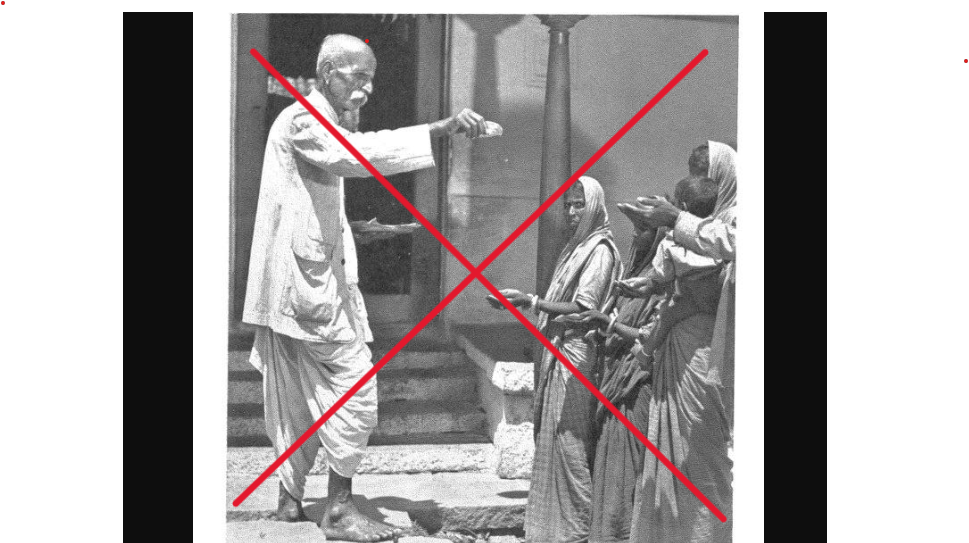The background of Article 17 lies in protecting the dignity of those who have been victims of discrimination, prejudice and social exclusion.
The Constitution has designedly left untouchability undefined. Any form of stigmatization which leads to social exclusion is violative of human dignity and would constitute a form of “untouchability”.
Root cause of untouchability
The Drafting Committee did not restrict the scope of Article 17. The practice of “untouchability”, as pointed out by the members of the Constituent Assembly, is a symptom of the caste system. The root cause of “untouchability” is the caste system.
The caste system represents a hierarchical order of purity and pollution enforced by social compulsion. Purity and pollution constitute the core of caste. While the top of the caste pyramid is considered pure and enjoys entitlements, the bottom is considered polluted and has no entitlements. Ideas of “purity and pollution” are used to justify this distinction which is self-perpetuality. The upper castes perform rituals that, they believe, assert and maintain their purity over lower castes. Rules of purity and pollution are used to reinforce caste hierarchies.
The notion of “purity and pollution” influences who people associate with, and how they treat and are treated by other people. Dr Ambedkar’s rejection of privileges associated with caste, in “Annihilation of Caste”, is hence a battle for human dignity. Dr Ambedkar perceived the caste system to be violative of individual dignity.
In his last address to the Constituent Assembly, he stated that the caste system is contrary to the country’s unity and integrity, and described it as bringing “separation in social life”. Individual dignity cannot be based on the notions of purity and pollution. “Untouchability” against lower castes was based on these notions, and violated their dignity. It is for this reason that Article 17 abolishes “untouchability”, which arises out of caste hierarchies. Article 17 strikes at the foundation of the notions about “purity and pollution”.
The current state of untouchability
Notions of “purity and pollution”, entrenched in the caste system, still continue to dominate society. Though the Constitution abolished untouchability and other forms of social oppression for the marginalised and for the Dalits, the quest for dignity is yet a daily struggle. The conditions that reproduce “untouchability” are still in existence. Though the Constitution guarantees to every human being dignity as inalienable to existence, the indignity and social prejudices which Dalits face continue to haunt their lives. Seventy years after independence, a section of Dalits has been forced to continue with the indignity of manual scavenging.
Article 17 was a promise to lower castes that they will be free from social oppression. Yet for the marginalized communities, little has changed. The list of the daily atrocities committed against Dalits is endless. Dalits are being killed for growing a moustache, daring to watch upper-caste folk dances, allegedly for owning and riding a horse and for all kinds of defiance of a social order that deprives them of essential humanity.
The Dalits and other oppressed sections of society have been waiting long years to see the quest for dignity fulfilled. Security from oppression and an opportunity to lead a dignified life is an issue of existence for Dalits and the other marginalized. Post- independence, Parliament enacted legislations to undo the injustice done to oppressed social groups. Yet the poor implementation of law results in a continued denial which the law attempted to remedy.
Article 17 is a social revolutionary provision. It has certain features. The first is that the Article abolishes “untouchability”. In abolishing it, the Constitution strikes at the root of the institution of untouchability. The abolition of untouchability can only be fulfilled by dealing with notions which it encompasses. Notions of “purity and pollution” have been its sustaining force. In abolishing “untouchability”, the Constitution attempts a dynamic shift in the social orderings upon which prejudice and discrimination were institutionalized.
The first feature is a moral re-affirmation of human dignity and of a society governed by equal entitlements. The second important feature of Article 17 is that the practice of “untouchability” is forbidden. The practice is an emanation of the institution which sustains it. The abolition of the practice as a manifestation is a consequence of the abolition of the institution of “untouchability”. The third significant feature is that the practice of untouchability” is forbidden “in any form”. The “in any form” prescription has a profound significance in indicating the nature and width of the prohibition.
Every manifestation of untouchability without exception lies within the fold of the prohibition. The fourth feature of Article 17 is that the enforcement of disabilities founded upon “untouchability” shall constitute an offence punishable in accordance with law. The long arms of the criminal law will lend teeth to the enforcement of the prohibition.
The Constitution has carefully eschewed a definition of “untouchability”. The draftspersons realized that even a broadly couched definition may be restrictive. A definition would become restrictive if the words used or the instances depicted are not adequate to cover the manifold complexities of our social life through which prejudice and discrimination is manifest.
Hence, even though the attention of the framers was drawn to the fact that “untouchability” is not a practice referable only to the lowest in the caste ordering but also was practiced against women (and in the absence of a definition, the prohibition would cover all its forms), the expression was designedly left undefined.
The Constitution uses the expression “untouchability” in inverted comas. The use of a punctuation mark cannot be construed as intent to circumscribe the constitutional width of the expression. The historical backdrop to the inclusion of the provision was provided by centuries of subjugation, discrimination and social exclusion. Article 17 is an intrinsic part of the social transformation which the Constitution seeks to achieve.
Reference
Justice Rohinton F. Nariman in Indian Young Lawyers Association v. Union of India (2018)
